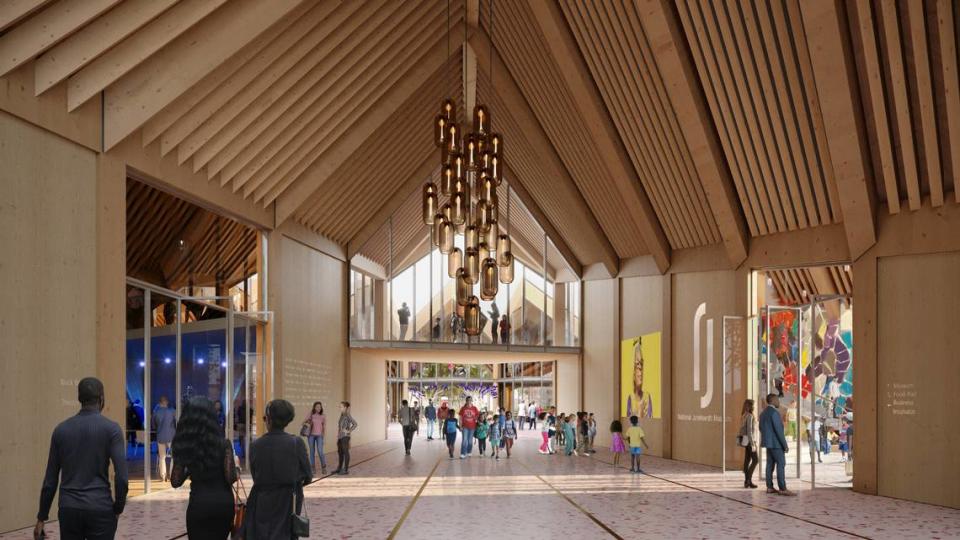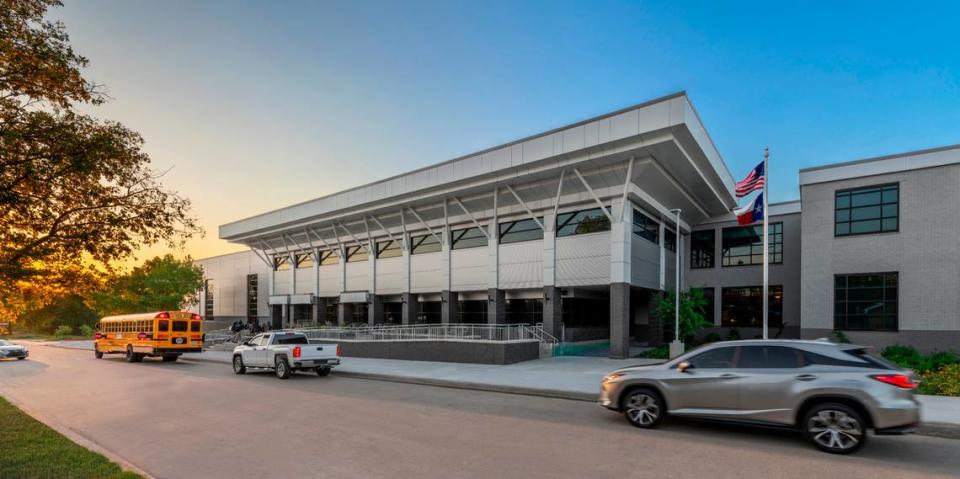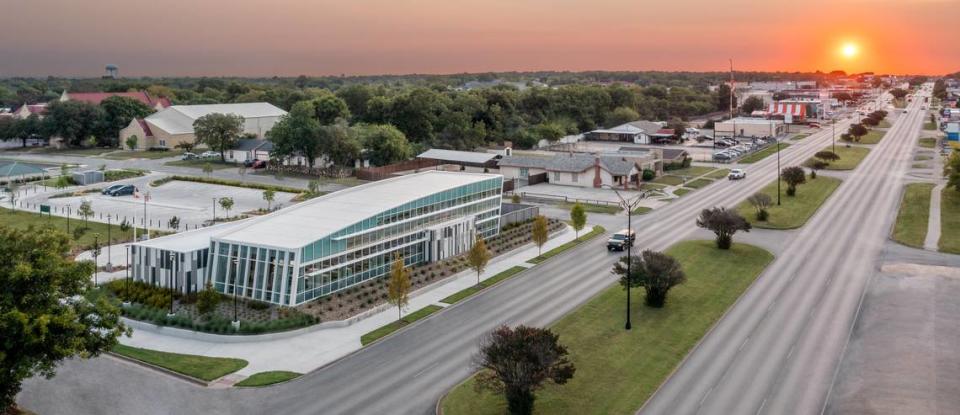Architecture firm transforms under-served areas. What’s that look like in Fort Worth?
In 2020, KAI Enterprises celebrated its 40th anniversary as one of the country’s largest minority owned architecture, engineering and construction firms.
Like then, the business — which is based in St. Louis, but has an office in Irving and is active in Fort Worth — can today point to various projects across the country it has worked on that had a positive impact on communities. This includes the Boys & Girls Club of Greater St. Louis Teen Center of Excellence, which was built to renew the Ferguson area, and the Martin Luther King Jr. Recreation and Aquatic Center in Atlanta.
KAI’s president, Darren L. James, consulted with his leadership team and felt they didn’t want to linger in the past with their accomplishments in transforming communities. Their aim is to also invest in their team so everyone can become the best professionals they can be and give back to under-served communities.
“We didn’t want to go back in history and try to say, ‘Well, we’ve already done so many, so let’s count those,’ ” James said. “We don’t want to make that kind of disingenuous commitment. We want to pay this forward but we want to recognize and create a milestone year of 2020.”
Projects include National Juneteenth Museum in Fort Worth
Thus, the company created a goal of transforming 100 communities in 10 years by continuing its presence in neighborhoods around the country, especially in Fort Worth, where it will take part in projects like the National Juneteenth Museum as the architect of record.
James is vocal about investing in under-served and underprivileged communities and when traveling around the KAI Enterprises headquarters in St. Louis he noticed that projects in different areas with the same public funding looked different. A project in an underprivileged area might look like a bomb shelter while a similar project in an affluent area might have plenty of natural light with more attractive architecture.
James said communities shouldn’t receive less because they are in a certain ZIP code, and he wants to make sure any new building represents the entire community. He wants the facility to give a voice to people who have traditionally been disenfranchised or disconnected from decision making.
KAI Enterprises recently moved its Dallas office to Irving to become more focused on the entire Dallas-Fort Worth metroplex. He became KAI Enterprises’ president in 2005 and, since then, has been invested in the Fort Worth area with projects such as the Reby Cary Youth Library and Paul Laurence Dunbar Young Mens Leadership Academy.
The company is collaborating on the development of the National Juneteenth Museum, which will be in the Historic Southside neighborhood. The neighborhood is classified as a food desert by the USDA and is within the 76104 ZIP code, where people have the lowest life expectancy in Texas at 66.7 years, according to a UT Southwestern study.

James said he and his company bring a level of engagement and sensitivity to conversations with community members who may have a lack of trust toward anyone investing in their neighborhood. They held conversations in the Historic Southside with residents concerned about gentrification and how they can be a part of the museum’s growth to show that the Juneteenth Museum is a community investment.
“The intent is that this just becomes the first of other investments in the community that raises the community back to the level that it was previously because we invest in that type of nice environment,” James said. “That kind of cultural institution is going to draw not only local attention, but also national and international attention, and that investment will hopefully spur additional development that will benefit the legacy residents.”
Focused on inclusion
National Juneteenth Museum CEO Jarred Howard is excited to work with KAI Enterprises because the company works in the DFW area , is focused on inclusion, and has a history of working on community-centric projects.
“We’re as intentional about positively impacting this community as we are about accurately narrating the Juneteenth story,” Howard said. “To that end, we’re committed to shifting the socioeconomic trajectory of a neighborhood that has been neglected for far too long, and we’ll do that through the many programs that are part of the museum’s design, like the food hall, theater, and business incubator.”
KAI Enterprises finished another project in Fort Worth this year, the renovation of the Paul Laurence Dunbar Young Men’s Leadership Academy, which reopened in August.

The Leadership Academy is a college preparatory school and the Fort Worth Independent School District’s first single-gender school for boys from grades 6 through 12. The school has about 370 students, 81% of whom are socioeconomically disadvantaged, which qualifies those students for free lunch and breakfast. A grant allows the school to extend that benefit to all students.
The renovations exceeded $40 million and increased the school from 55,000 to 110,000 square feet. Additions ranged from a business marketing lab, a state of the art library, a 600-seat gymnasium, a band room, robotics and engineering labs, and a JROTC wing with a rifle range.
Rodney White, the school’s principal, said he wanted his school to have a learning environment that rivaled a local university or college like Tarrant County College.
“Their facilities are very nice, and I wanted them to respect the learning environment,” White said. “I just wanted them to have a nice place that they could be proud of, because they deserve that.”
KAI Enterprises has also done work with public libraries such as Reby Cary Youth Library, an 8,000-square-foot, $5.49 million facility that is designed solely for kids. The library is in the East Lancaster area, where students are considered at-risk and schools have a history of poor performance.

James said his company found in its research and through community conversations that a child’s literacy is impacted most by someone reading to them. The library was constructed to feature lower shelving and seating designed to encourage families to read together. It also includes interactive art, multiple study rooms, bookshelves with embedded seating and open space for people to see the activity inside.
James, who was appointed chair of the Texas Board of Architectural Examiners by Gov. Greg Abbott, said he company always goes back to its underlying philosophy of “good and great design matters” where the community should be a part of that design, no matter their class status.
The designs “are formed by the conversations we have with the parents of the students that we’re designing the schools for, or the residents that are going to use the community centers, or the families and educators that will utilize the libraries,” James said. “It’s all informed by having authentic listening and community engagement, where we’re actually seeking and sourcing disparate comments and thoughts on what your dreams and visions are for your community.”

